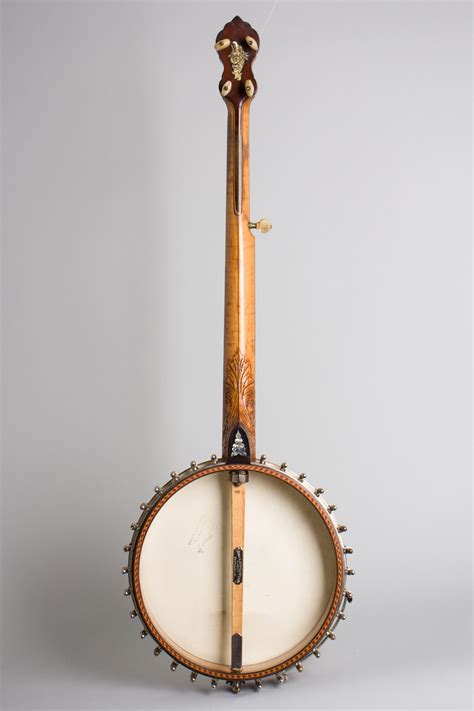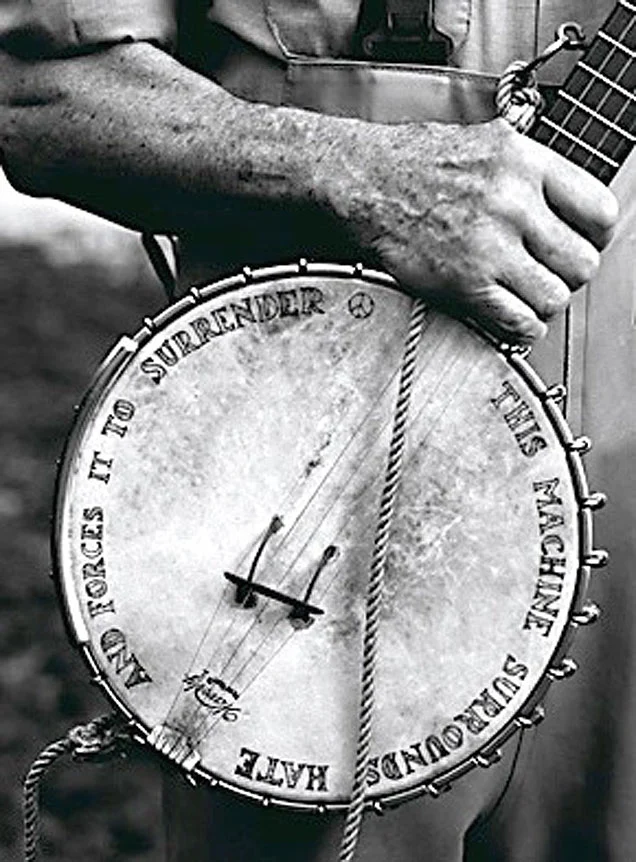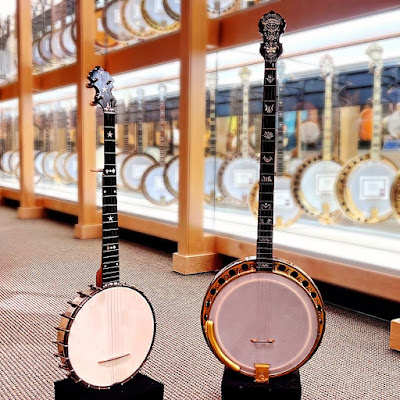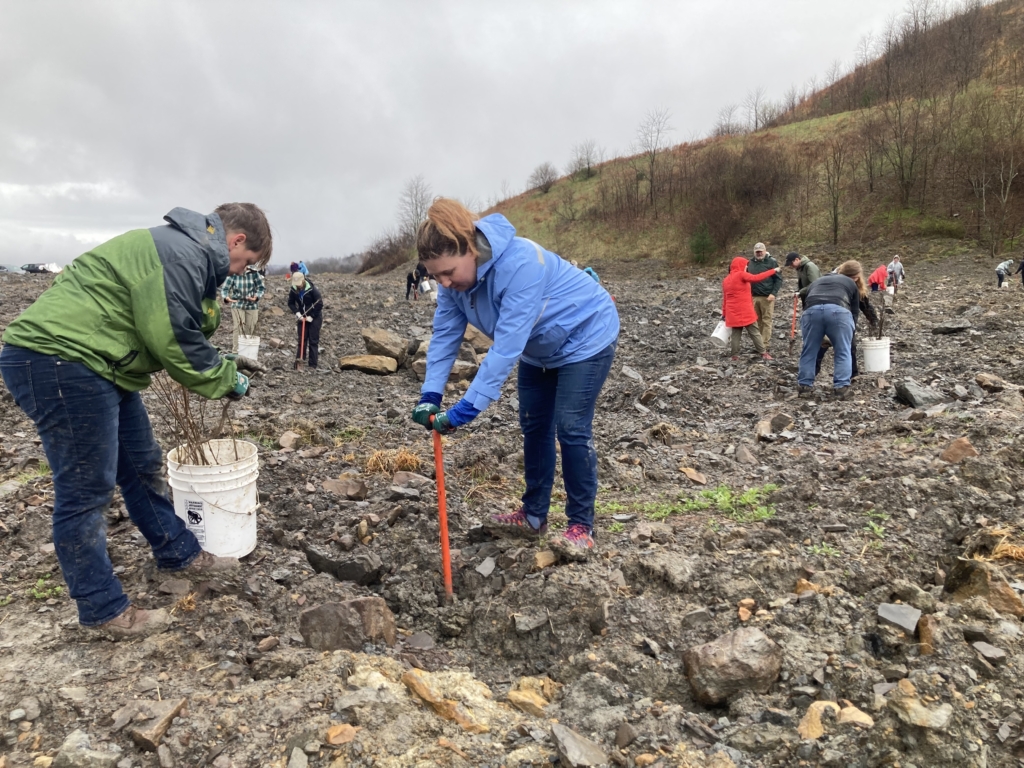
Written By: Patrick David Sawyer
The Golden Age of Banjo Innovation
The late 19th and early 20th centuries saw a revolution in banjo craftsmanship, led by A.C. Fairbanks and David L. Day. Their groundbreaking designs, including the Electric AKA “Whyte Laydie” and Tub-a-phone tone rings, set new standards for tone and playability, influencing generations of banjo makers. While the Vega Company later acquired Fairbanks and continued producing these models, it was the innovations of Fairbanks and Day that truly shaped the instrument’s evolution.
More than a century later, their influence remains strong. We at Pisgah banjos have been particularly dedicated to honoring the Fairbanks tradition. From our inception, Pisgah has been heavily inspired by the craftsmanship and design principles of early Fairbanks banjos, especially in its commitment to dowel stick construction, which plays a crucial role in preserving the sound and feel of historic instruments.
A.C. Fairbanks: A Visionary in Banjo Craftsmanship
An early A.C. Fairbanks Professional 5-string banjo, showcasing fine craftsmanship and attention to detail.
Albert Conant Fairbanks was instrumental in transitioning the banjo from a simple folk instrument to a finely crafted, professional-grade instrument. His company, A.C. Fairbanks & Co., gained recognition for producing banjos that combined elegant design with structural innovations that improved playability and tone.
Fairbanks banjos quickly became the choice of serious musicians, elevating the instrument’s status. However, despite the company’s success, financial difficulties and a devastating factory fire in 1904 ultimately led to its sale.
David L. Day and the Evolution of Banjo Tone
Fairbanks Special Electric Banjo, an early example of the company’s innovative designs.
David L. Day, who joined Fairbanks in the 1890s, was a driving force in the company’s most significant innovations. His engineering expertise led to the development of two of the most revered tone rings in banjo history:
- The Electric AKA “Whyte Laydie” Tone Ring (1901) – Featuring a scalloped metal ring, this design created a bright, clear, and responsive tone that became a favorite among banjoists still used by many professionals.
- The Tub-a-phone Tone Ring (1909) – By incorporating a hollow, tubular metal ring, this innovation added warmth and sustain while maintaining projection, making it a continued popular tone ring choice to this day.
These advancements solidified Fairbanks’ reputation as a leader in banjo design, setting a standard that continues to define open-back banjos.
Pisgah Banjos produces in house an exact reproduction of the electric tone ring found in their Pisgah Laydie model and a fine reproduction of the Tub-a-phone tone ring found in their Pisgah Tub-a-phone Model.
Vega’s Acquisition of FairbanksA 1907 Fairbanks Whyte Laydie No. 7, a model that remains highly sought after by collectors and musicians alike.
In 1904, the Vega Company, a Boston-based instrument maker known for producing brass instruments, acquired A.C. Fairbanks & Co.. Recognizing the quality of Fairbanks’ designs, Vega continued to manufacture the company’s flagship banjos, initially branding them as “Fairbanks by Vega.” Eventually, the Fairbanks name was phased out, but Vega maintained production of models like the Whyte Laydie and Tub-a-phone well into the 20th century.
Though Vega played an important role in keeping these designs available to musicians, the true credit for their innovation belongs to Fairbanks and Day. Their pioneering work continues to influence modern builders who are dedicated to preserving the legacy of these early designs.
Vega’s Changing Ownership Over the Years
Despite its long-standing reputation, Vega underwent several changes in ownership throughout the 20th century:
- 1970: Vega Sold to C.F. Martin & Co. – The well-known guitar manufacturer C.F. Martin acquired Vega, but banjo production was not a major focus, and by the 1980s, Martin ceased producing Vega banjos.
- 1979: Vega Name Acquired by Galaxy Trading – The Vega brand was sold to Galaxy Trading, which produced Vega-style banjos with a focus on entry-level and mid-range models.
- 1985: Deering Acquires Vega – In 1995, Deering Banjo Company took possession of the Vega name and continues to make banjos using more modern designs, materials and construction under the Vega brand.
While the Vega brand has continued to change hands, the core designs that originated with Fairbanks and Day remain some of the most respected and sought-after banjos in history.
The Importance of Dowel Stick Construction
One of the defining structural features of early Fairbanks banjos was dowel stick construction, a traditional method of securing the neck to the pot that remains highly valued in the old-time music community today.
An early Fairbanks & Cole banjo from the 1880s, showing the traditional dowel stick construction still used by some modern builders.
- The dowel stick, a wooden rod that connects the neck to the rim, allows for natural vibration transfer, preserving the warm, resonant tone that defines vintage open-back banjos.
- Unlike metal coordinator rods, which were introduced in later years, dowel sticks maintain the structural integrity and aesthetic of historic banjos.
- This construction method is considered essential for achieving the authentic tone and feel of early Fairbanks instruments.
Modern builders who seek to faithfully recreate the sound and craftsmanship of early Fairbanks banjos continue to use dowel stick construction.
Pisgah Banjos: A Commitment to the Fairbanks Legacy
Along with many contemporary boutique banjo makers we at Pisgah Banjos have been particularly influenced by the design and ethos of early Fairbanks banjos. From our founding, we have set out to create instruments that captured the essence of these vintage models, drawing inspiration from their craftsmanship, materials, and structural techniques.
- Whyte Laydie and Tub-a-phone-Inspired Designs – our instruments reflect many of the tonal characteristics of the original Fairbanks banjos, with a focus on clarity, projection, and warmth.
- Dowel Stick Construction – Staying true to Fairbanks’ traditional building techniques, we have made dowel stick construction a standard in its banjos, ensuring that the tone and response remain as close as possible to the originals.
The Lasting Legacy of Fairbanks and Day
The innovations of A.C. Fairbanks and David L. Day continue to shape banjo-making over a century after their introduction. Their Whyte Laydie and Tubaphone tone rings, combined with dowel stick construction, remain benchmarks for high-quality open-back banjos.
While Vega played a significant role in carrying these designs forward, the true legacy belongs to Fairbanks and Day, whose commitment to innovation continues to inspire luthiers and musicians alike. Thanks to both historical preservation efforts and modern builders who stay true to traditional banjo construction, these iconic designs will live on for generations to come.
Sources & Further Reading
- Mugwumps Online. (n.d.). “Banjo Makers and Brands: Fairbanks, Vega, and Day.” Retrieved from http://www.mugwumps.com/
- Phillips, Tom. (2015). That Half-Barbaric Twang: The Banjo in American Popular Culture. University of Illinois Press.
- Deering Banjo Company. (2023). “The History of Vega Banjos.” Retrieved from https://www.deeringbanjos.com/
- Pisgah Banjos. (n.d.). “Our Philosophy & Craftsmanship.” Retrieved from https://www.pisgahbanjos.com/
Disclaimer:
Please note that the information expressed in this post is based on personal opinions from the author, informed by years of hard work and experience. While the insights shared are rooted in real-world practice, they reflect individual perspectives and may not apply universally. Always consider multiple viewpoints and consult professionals in the industry when necessary.








